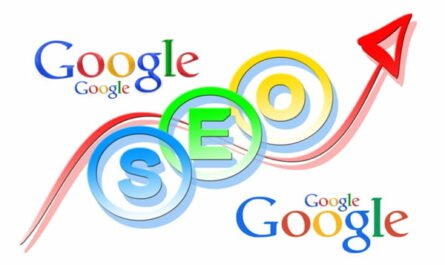
Do you know how hard it is to increase upload speed for a WordPress site?
Maybe not, but you will learn how to increase upload speed for your website.
Even if it seems hard to believe when we talk about how high your site appears in Google results, every second count. In fact, here we are talking about hundreds of seconds, or about a tie similar to that of athletes who practice performance sports.
In short, time means money.
The higher the loading speed of your WordPress site, the better you will sell. Whether you have a blog or an online store, we are sure you understand the importance of positioning among the first results.
And if you don’t take my word for it, let me remind you of what Amazon recently said: “A 1-second delay means a loss of $ 1.6 billion a year.”
Not convinced yet? Another statistic says that more than 40% of users will close a web page that loads in more than 3 seconds.
So, let’s see how you can lower these numbers as much as possible to have an SEO-optimized WordPress site.
(This post contains some affiliate links. Should you click an affiliate link and make a purchase I may receive a small commission at no extra cost to you.)
How do you check the loading speed of your WordPress site?
You have at hand 2 free tools offered by Google developers.
These are services that use Google’s algorithms to index sites, so the results are more than relevant.
Learn more about Page Quality Rating, or how Google indexes web pages.
So run the site analysis using:
- SE Ranking You can run the audit here.
- Google Lighthouse: Open a Chrome tab in Incognito mode and access your site. access developer mode (press Ctrl + Shift + I); choose the Audit tab and run Lighthouse.
At the end of the analysis, you will receive a detailed report on the loading times. In addition, you get a list of recommendations to follow to fix the problems.
However, if you do not have technical or programming knowledge, it will be difficult for you to understand what to do.
That’s why the tips below will explain what to do even when you don’t have a developer next to you.
9 practical tips to increase the uploading speed of your WordPress site
#1 Make sure you use the best hosting service
Maybe at the beginning of the road, you have chosen the cheapest hosting package for your WordPress site. There is nothing wrong with that.
However, as traffic increases, you should check that hosting services are in line with demand.
In short, it analyzes the number of monthly visits to the site (you can use Search Console or Google Analytics), checks the free space on the server, and, finally, compares this data with the services guaranteed by the existing hosting package.
If a change is required, don’t think about it and contact your service provider.
Choose the best package that meets your current needs. You will be able to change it later if needed.
There are 3 examples below that you can choose from.


#2 Decreases the number of HTTP requests
Each existing element in the source code of the WordPress site means an HTTP request.
The more requests we have, the longer the loading times.
These times can be reduced by giving up dynamic design elements, eliminating graphic animation elements, or by reducing the number of redirects.
The simpler and airier your site is, the better.
As for redirects, go to the Search Console, or any other tool that can give you their real number – for example, you can use Semrush. Analyze redirects and keep only those that are absolutely necessary.
#3 Decreases TTFB time (Time to first byte)
TTFB is the time when the browser waits to receive data from your WordPress site. For a fast charge, this time should be less than 200 milliseconds.
A slow TTFB time can be related to server configuration, network issues, content optimization, or site traffic.
We’ll talk about how you can optimize the type of content on your site a little later, while network issues can’t be controlled directly.
However, the best solution you can do to reduce this initial load time of your WordPress site is to enable cache browsing.
When a new visitor accesses your site, all of its items are temporarily cached – somewhere on your hard drive. By enabling cache browsing you ensure that this process is not resumed every time you re-access the site.
In short, cached items will no longer be loaded but will be retrieved directly from your hard drive which will improve the loading speed of your site.
You can enable this functionality through the WP Rocket plug-in.
#4 Run a site compression audit
For a WordPress site to load quickly, it often requires compression. In short, all files must take up as little space as possible. And this is achieved by compressing them.
But before drawing conclusions you need to check if your site needs this additional optimization.
That’s why you need a special audit. We recommend running it using SE Ranking or Netpeak Spider.(GET 25% by using this code: 85e3cc33) The tools will analyze your WordPress site and tell you to what extent compression will help improve loading time.
#5 Apply file compression
If after the audit you have come to the conclusion that compression can help you, stop thinking.
We recommend that you use Optimole to complete this process. The Optimole program will identify similar code structures and rewrite them to compress the size of the files. From this point of view, it is a perfect tool for optimizing HTML and CSS code.
#6 Optimize site images
We all know that images have a much greater impact than text. Moreover, it is recommended that the site be composed of as diverse content as possible that uses text, images, and videos.
See how you can optimize the text on your WordPress site without the help of a specialist.
However, the higher the number of uploaded images, the harder it will be for the site to load. This does not mean that you should not use images on your WordPress site.
All you have to do is check the existing images and, if possible, optimize them.
The first recommendation is to consider the format in which the images are saved. We want the compression level to be optimal to reduce the download time required when your site is accessed.
So change the format of images from PNG or JPEG to JPEG 2000, JPEG XR, or WebP.
Where possible, resize images for efficient compression. Of course, apply this solution without losing the quality of the pictures used.
#7 Saves images and video content to external sources
If you run a WordPress site that contains a large number of pictures and video content, we recommend that you transfer these files to another source.
In short, it does not occupy the server with files that take up a lot of space. Moreover, do not upload this type of content to the WordPress Media Library to avoid a heavy loading of the site.
The solution, in this case, is a cloud storage service. The images will be uploaded separately and will only be uploaded to your WordPress site (instead of uploading a large image, the code will send a short request to the cloud from where it will take the image).
The same can be done with existing videos. In this case, the solution is even easier. All you have to do is create a YouTube account and post all your videos there. In WordPress, you just need to insert the link to the video, which is then automatically uploaded and displayed on the web page.
We recently talked about the impact that video content has on sales. Check this article about marketing strategies in 2021.
#8 Give up as many plugins as possible
The functionality of your WordPress site can be extended with the help of plugins. It is the main reason why we love this platform so much.
However, each plugin will add a loading time to your site. As you can see, many plugins mean a rather “lazy” site.
Well, it’s time to look at the list of installed plug-ins. We can recommend that you keep only the essentials and give up the rest.
You can check the load times for each plug-in used using P3, an extension that analyzes the impact of modules running on the site.
Here is a list of useful plugins for WordPress.
#9 Delays loading certain JavaScript files
To increase the uploading speed of your WordPress site you need to decide which items to load the first time. Basically, you choose what you display to users until the site is fully loaded.
And to do this you need to delay the loading of JavaScript files.
JavaScript files are usually the largest, load the hardest, and are not essential to navigating your WordPress site – they are graphics that add animation and dynamics to your web page.
You can choose to prioritize uploading files and elements from WordPress using an intuitive tool: WP Rocket. This tool will also come with a number of other options that you can use to improve the loading speed for the website you manage.
Conclusion
Remember, upload speed is the main criterion used by Google in ranking organic impressions. Pay attention to this aspect and always check the figures to make the right decisions in a timely manner.
Otherwise, you even risk penalties from the indexing algorithms.
If you liked this article, please share it, so, your friends can also read this amazing stuff.









